Most of the diagnostic technologies being created in the Ian Potter NanoBioSensing Laboratory interact with biological fluids removed from the body, however, where they are incorporated with the body it seems wise to question their effects — science doesn’t yet have comprehensive long term studies to claim the complete safety of nanoparticles. Consideration of technologies and their implications — biological, social and cultural — is also salient in an era where technologies are proliferating at an almost exponential rate. In Australia, it seems timely given the push by Peter Dutton to create a national infrastructure for facial recognition surveillance. My personal view is that we should be publicly debating technologies before they are released into the wild. So how might art help stimulate discussion around emergent technologies such as NanoBioSensing Technologies? One approach is to encourage public engagement and stimulate debate by making them visible and impossible to ignore.
The past two weeks I have been using a high resolution Scanning Electron Microscopy (SEM) to visualise the nanotechnologies being developed in the lab, and also developing some primary experiments leading toward capturing cells interacting with NanoBioSensing Technologies.
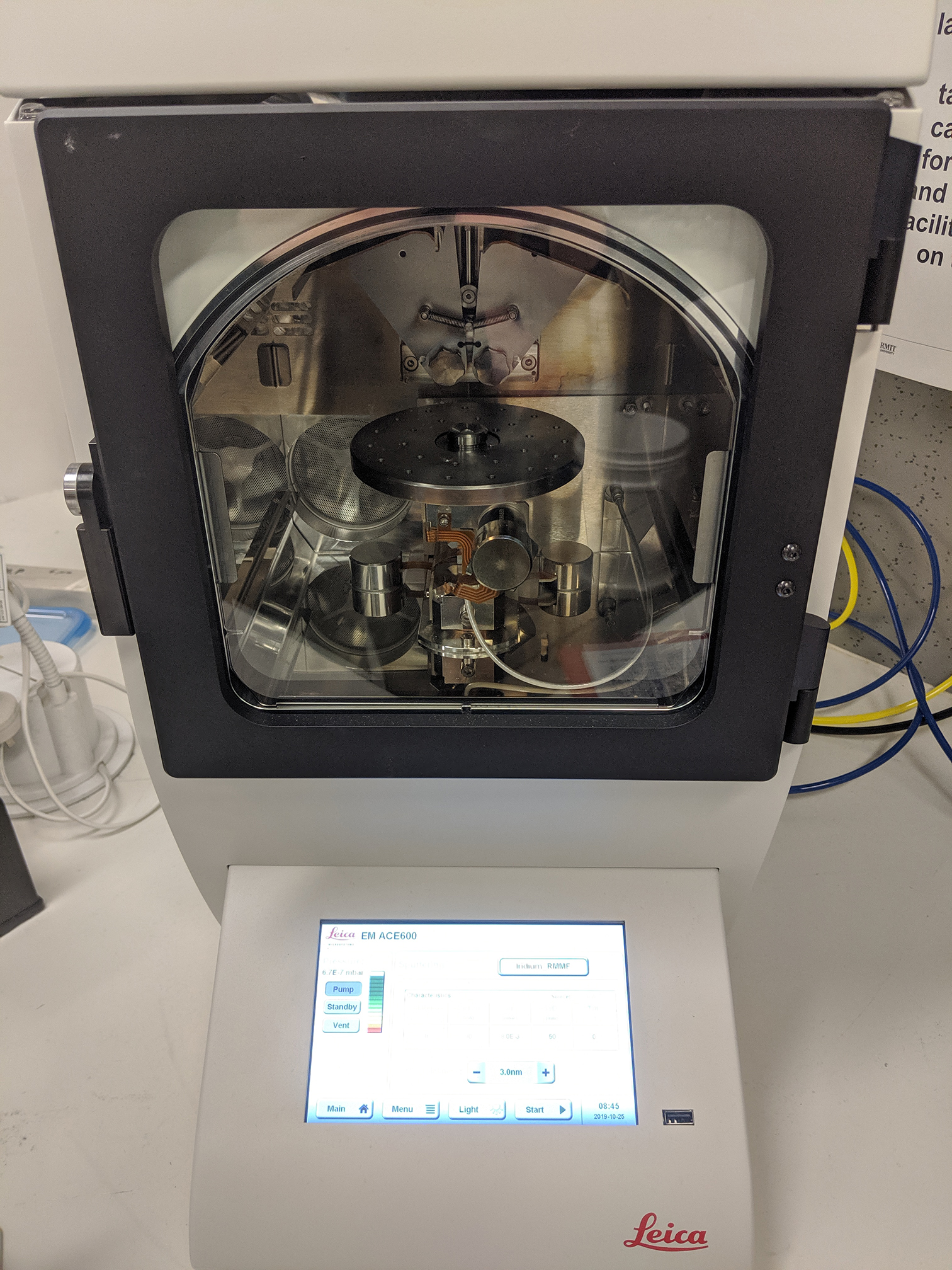
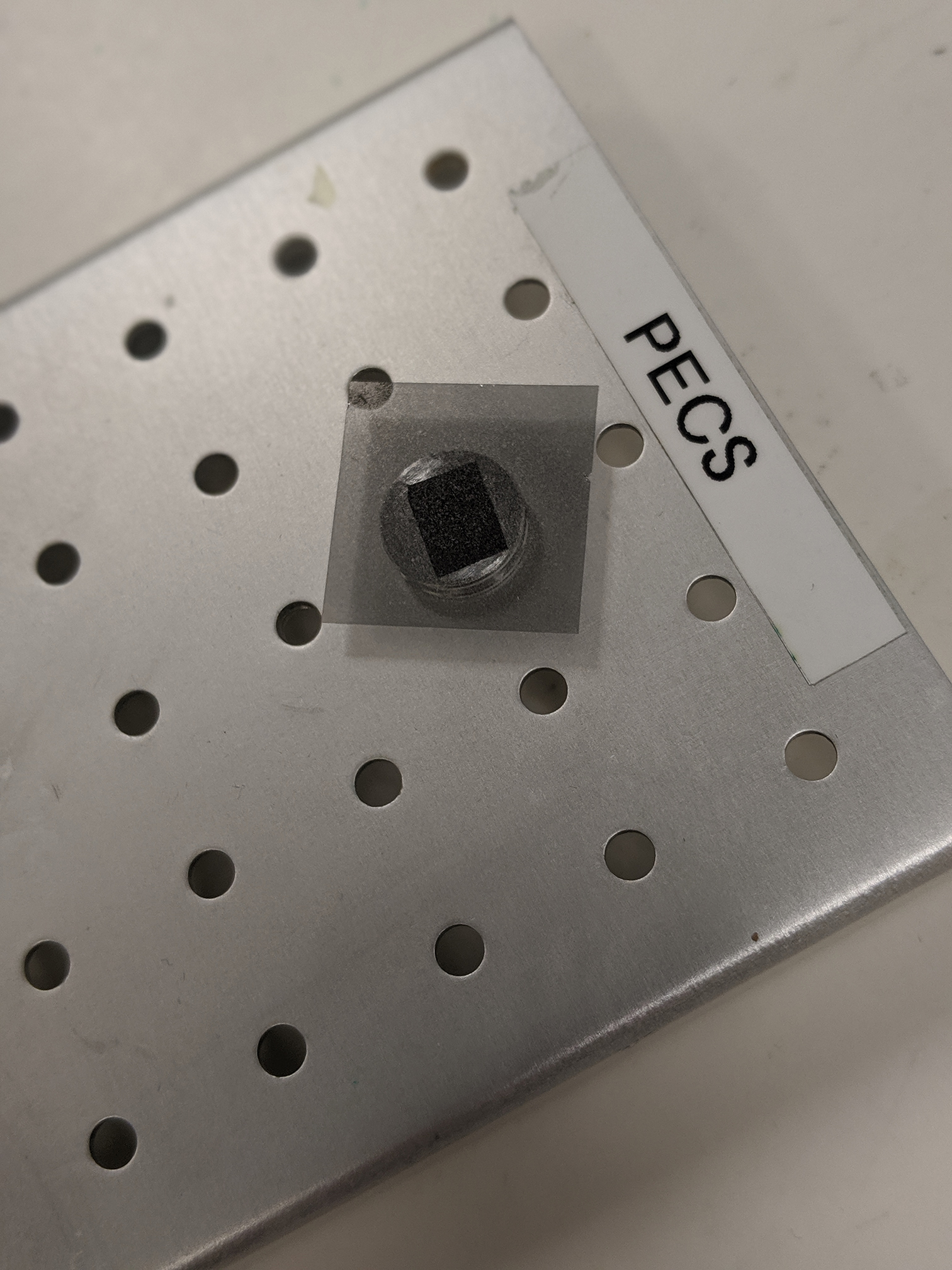 The sample is then sputter coated with a metal such as gold or iridium. Without this coating a biological sample with low conductivity wouldn’t have enough contrast to be seen particularly well.
The sample is then sputter coated with a metal such as gold or iridium. Without this coating a biological sample with low conductivity wouldn’t have enough contrast to be seen particularly well.
The FEI Verios SEM at the RMIT Microscopy and Microanalysis Facility (RMMF).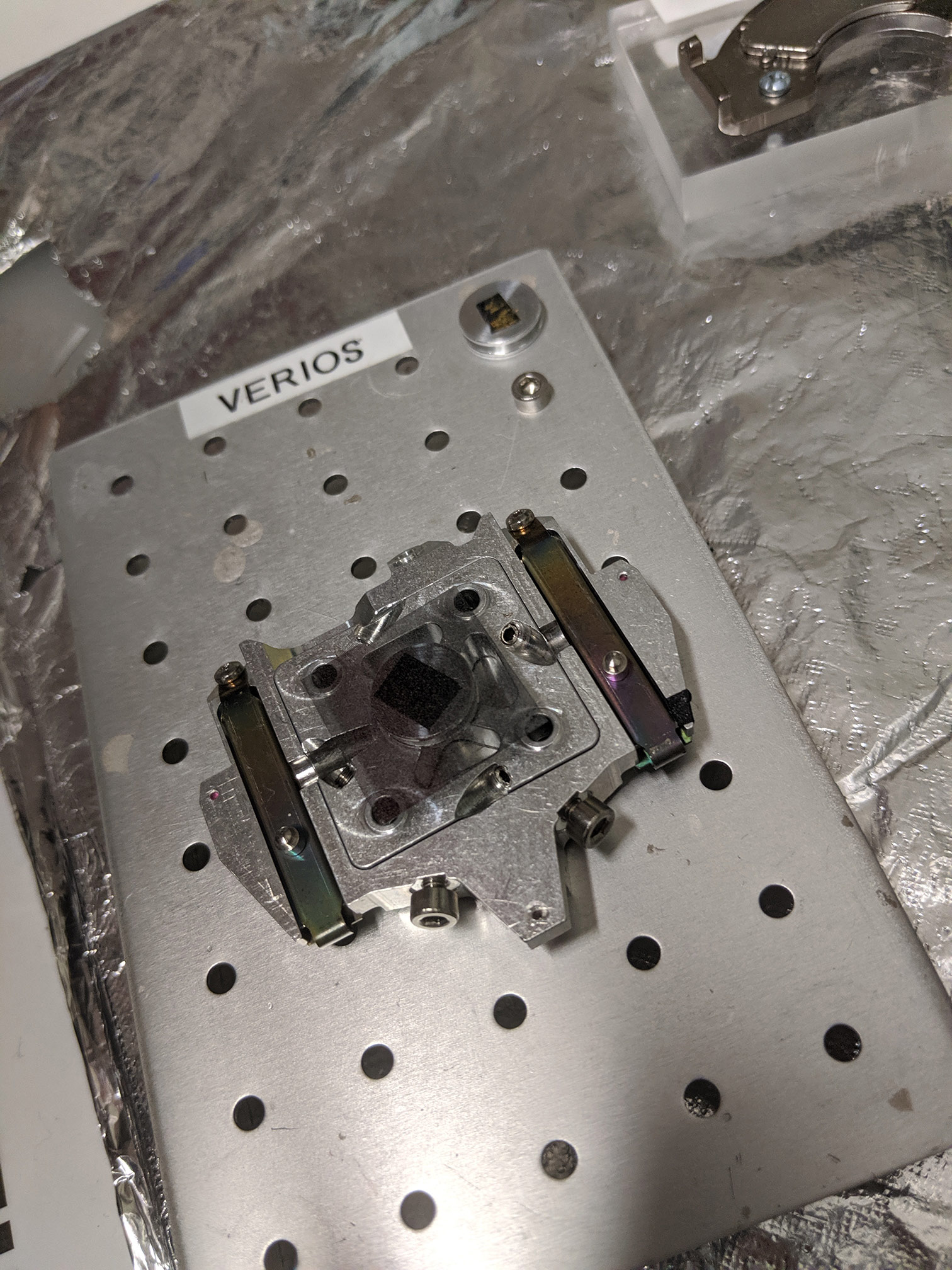
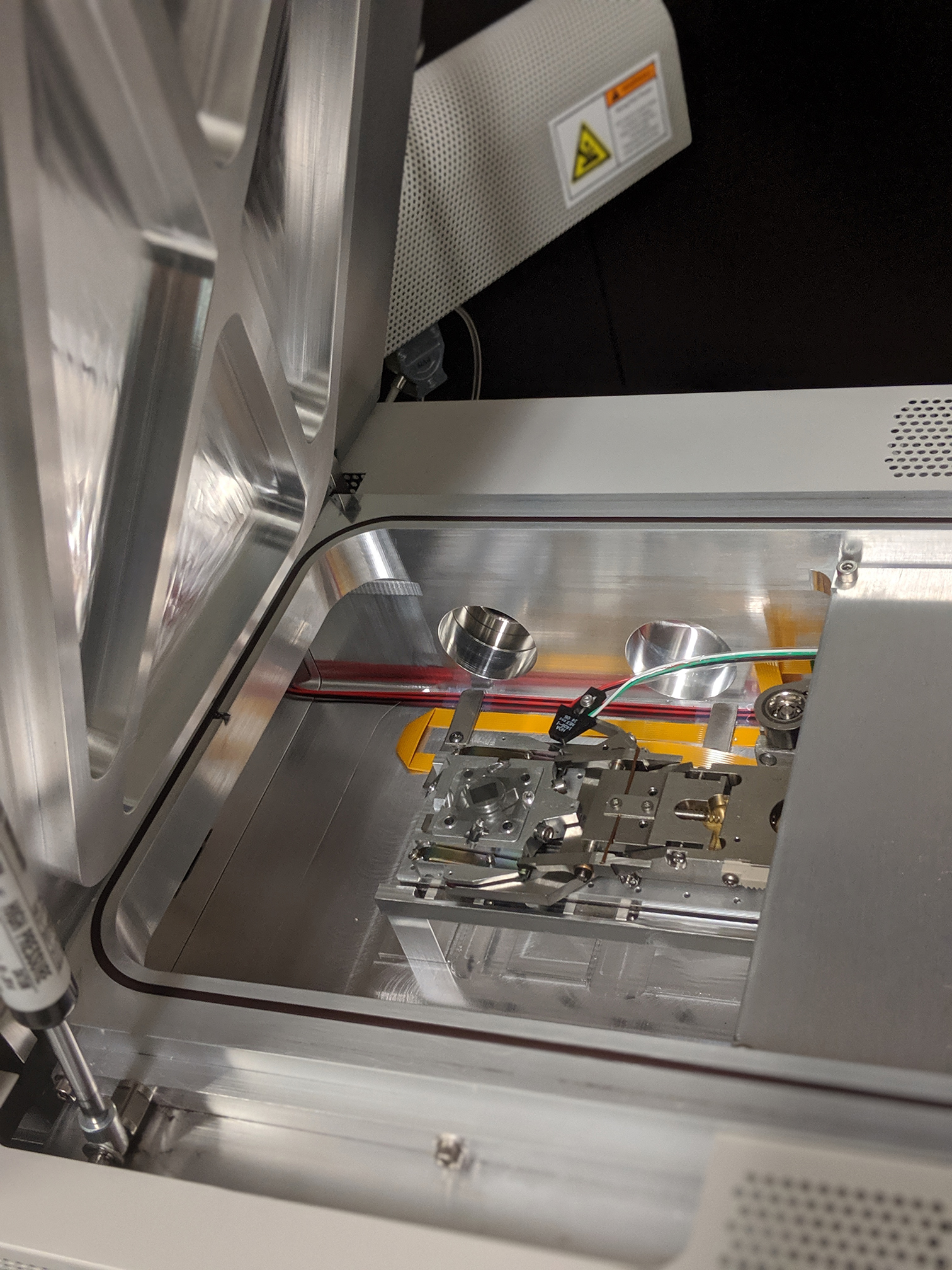
The sample holder and chamber of the SEM.
I have been using these cells to test a visual media workflow and integrate scientific imaging processes with media software, specifically capturing large volumes of images to enable virtual cinematography.
Following these large data collections, I have been experimenting with applying a virtual camera to the collections of images, animation where the final video is High Definition (1920×1080 pixels). The next tests will experiment with up to 8K video tracking across a two-dimensional plane but also across scales.
Huge thanks are due to Sam Anderson of the Ian Potter NanoBioSensing Laboratory, and the staff of the RMMF, especially Dr Matthew Field, who have facilitated this exploration and been open to experimenting with imaging software in the facility. In order to engage the public and stimulate discussion around NanoBioSensing Technologies, I plan to to put representations of the technologies into the public space… plans are afoot to incorporate this imaging process into a large scale interactive public installation. Watch this space!

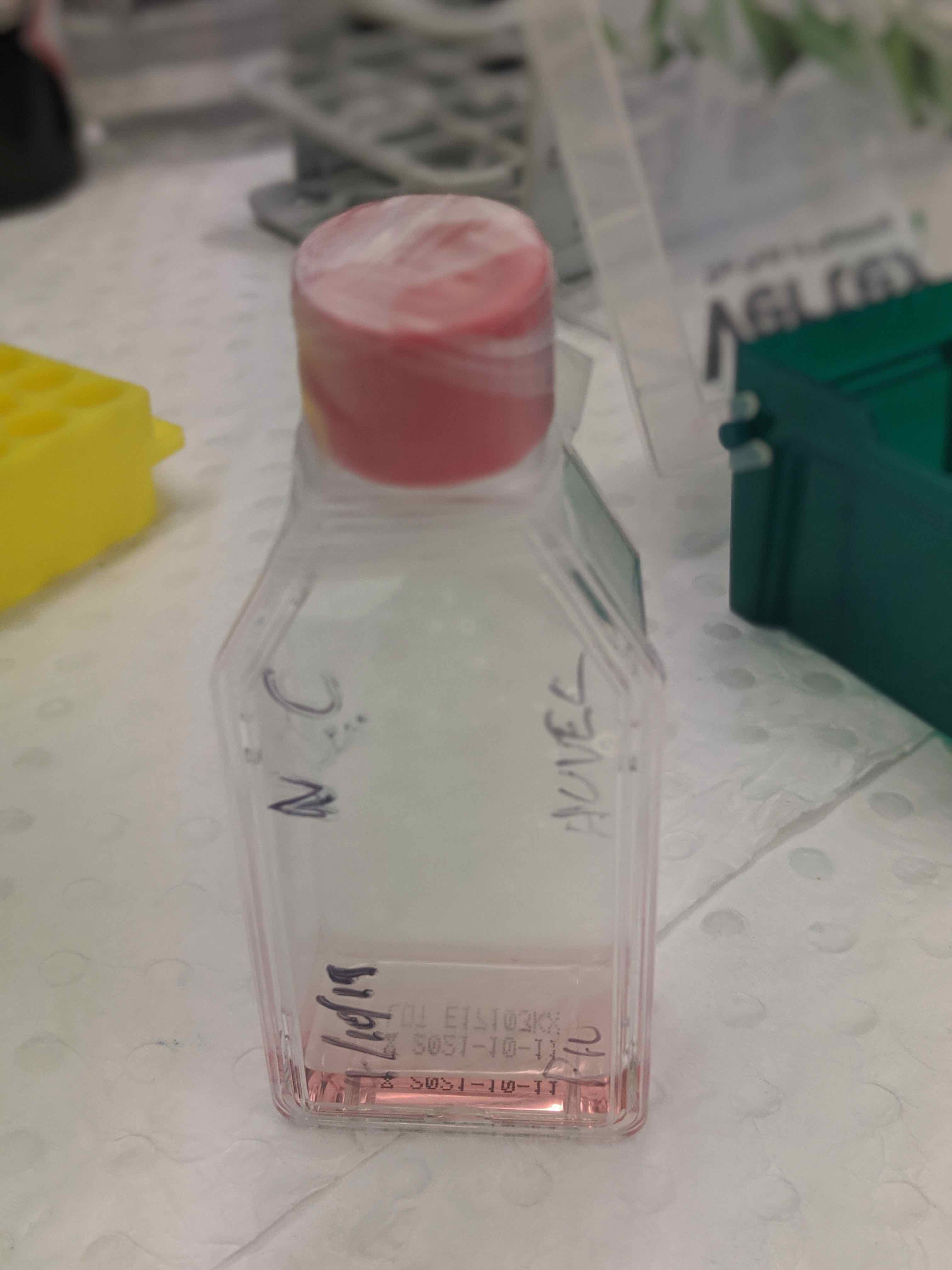
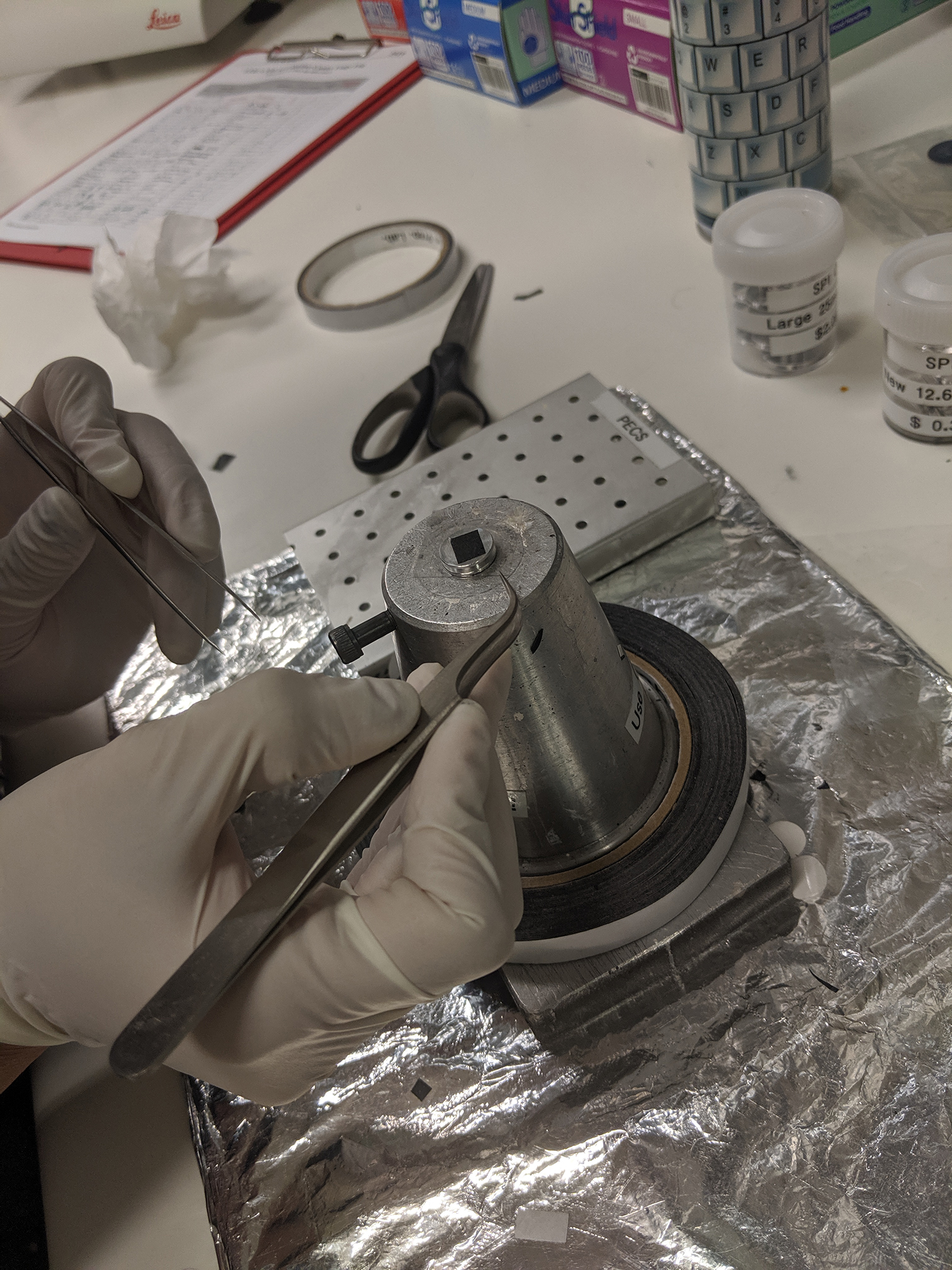
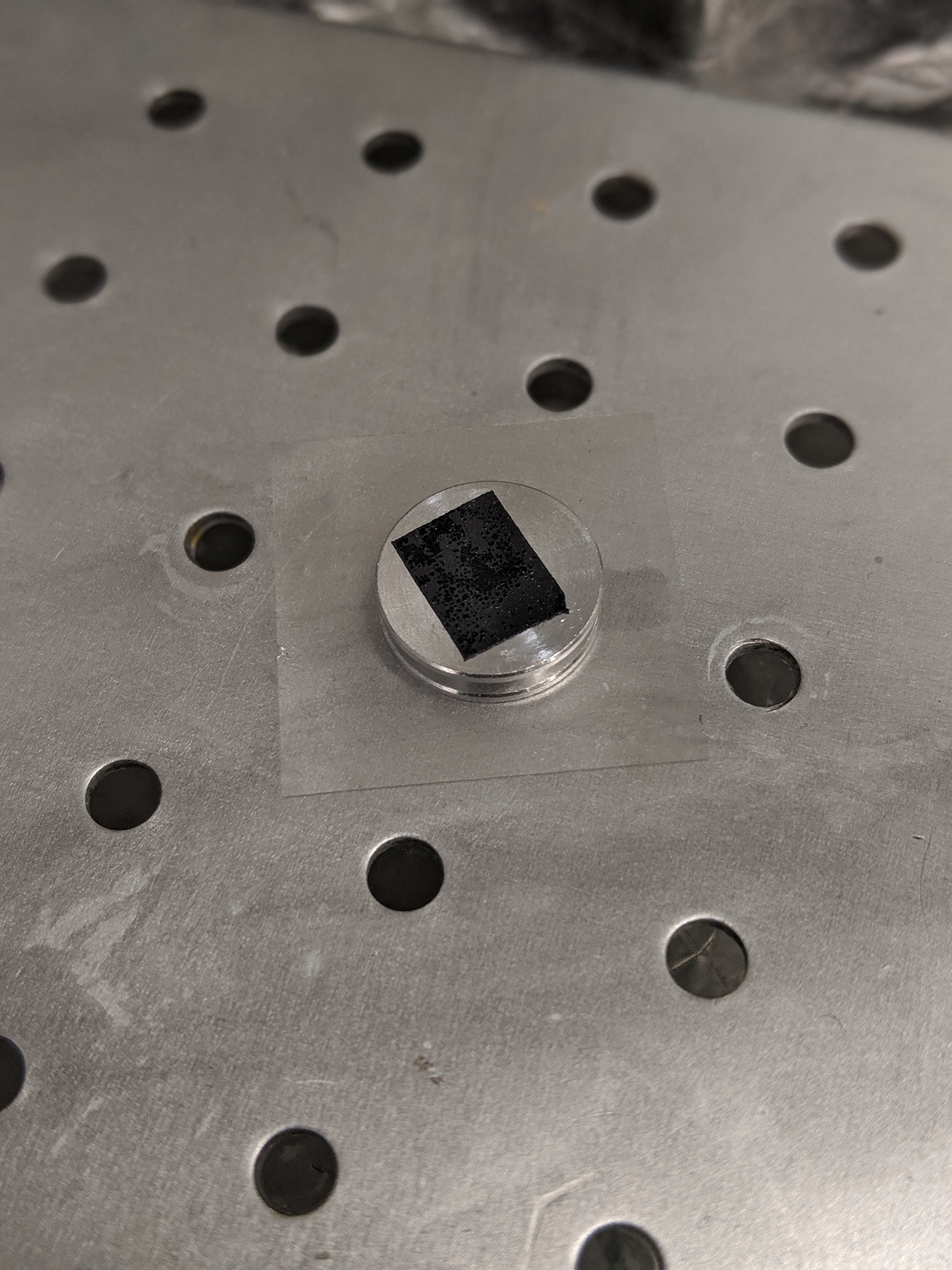
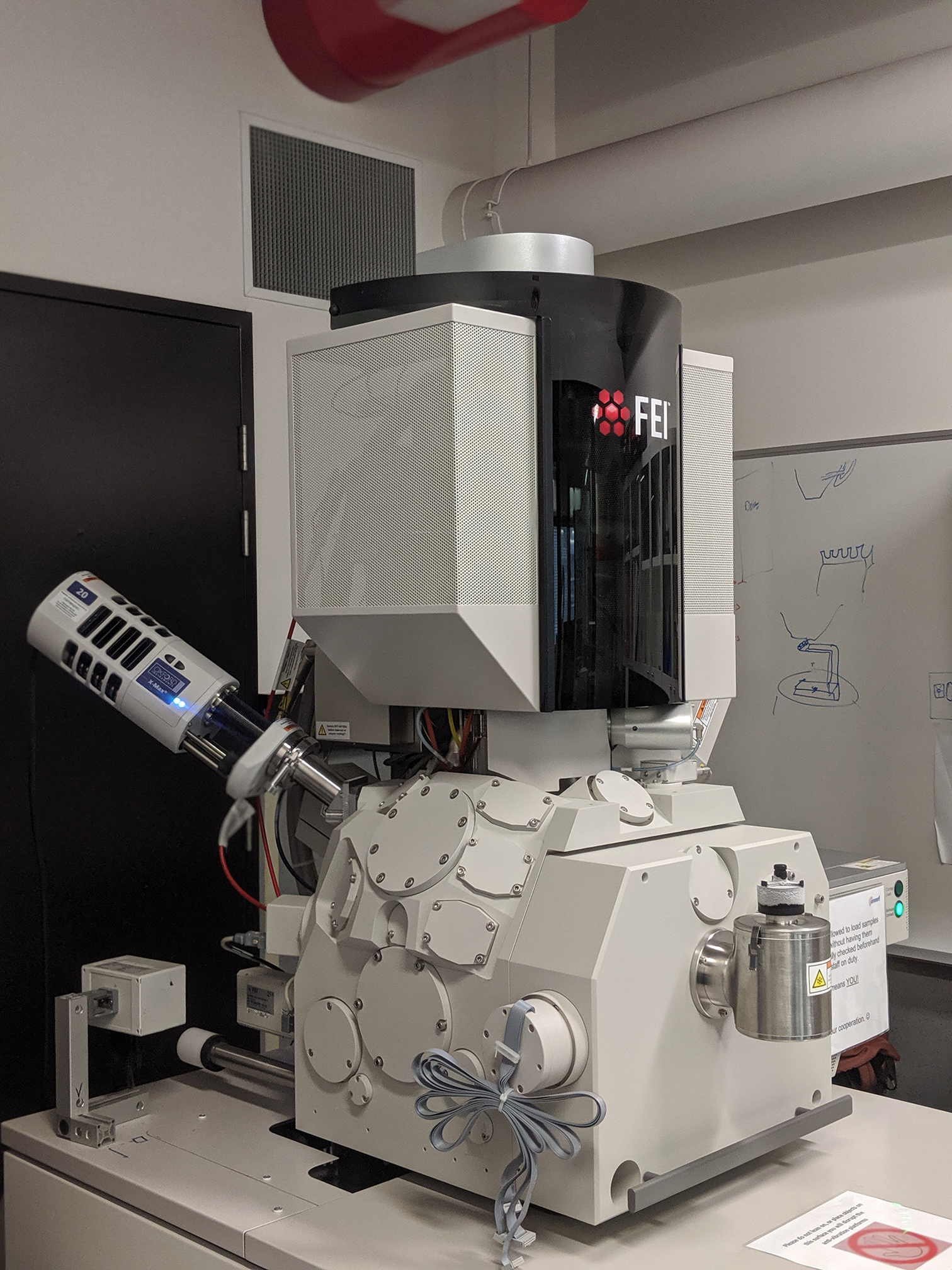
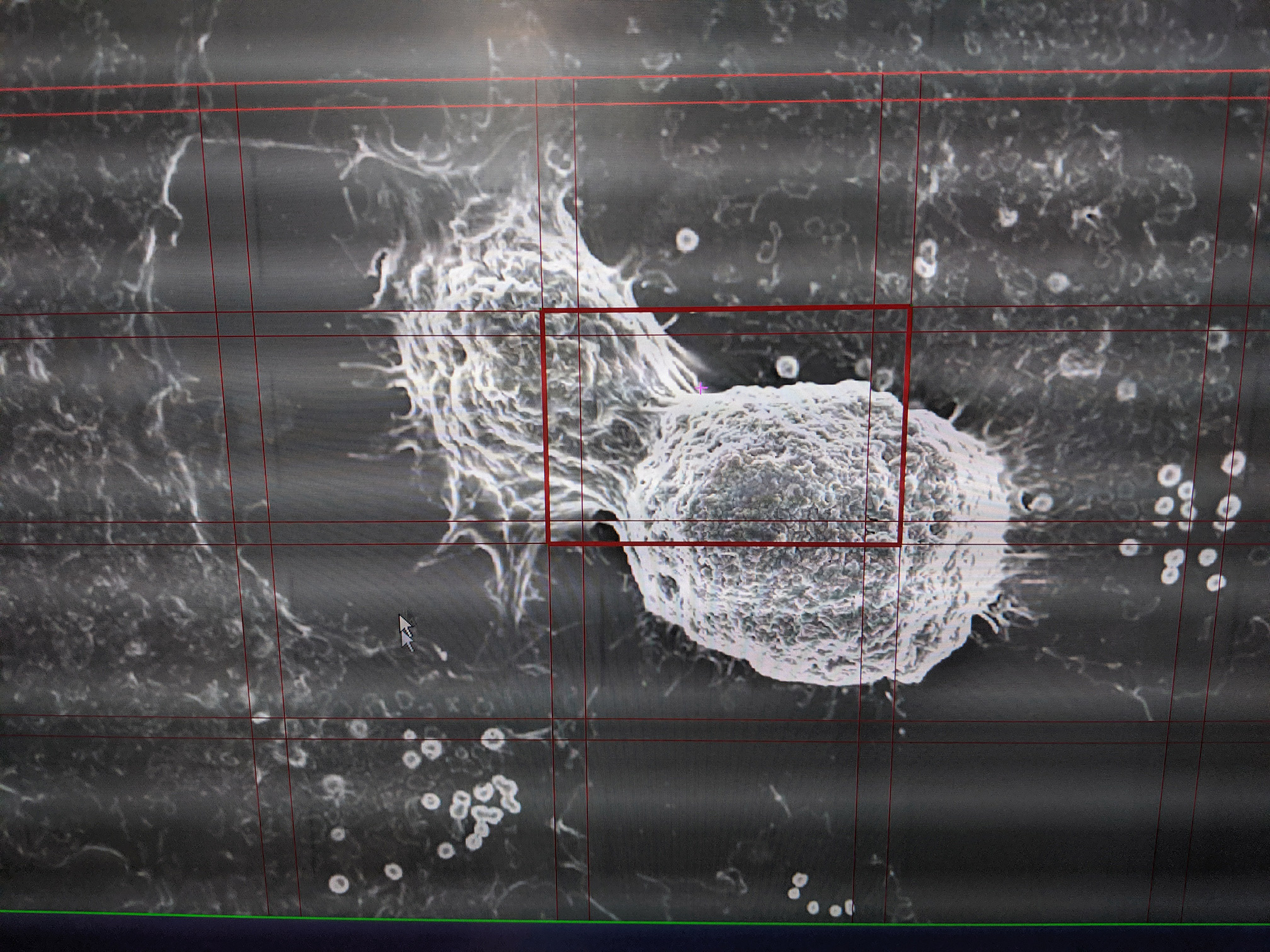 The gridded lines of the FEI MAPS software that enables data collection across large areas, producing images of up to a terabyte that have sufficiently high depth, width and height resolution that they can later be used for virtual applications.
The gridded lines of the FEI MAPS software that enables data collection across large areas, producing images of up to a terabyte that have sufficiently high depth, width and height resolution that they can later be used for virtual applications.